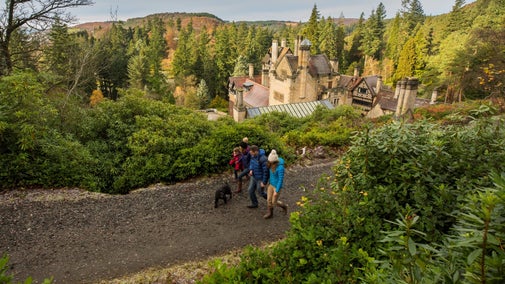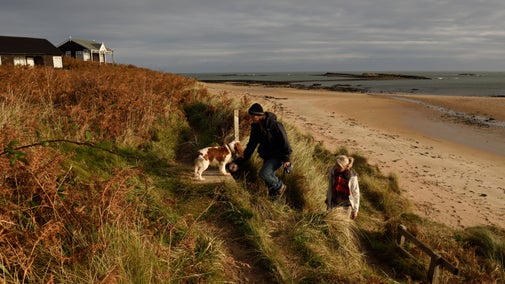Craster to Low Newton coastal walk
North East
Enjoy magnificent views and miles of sandy bay on this circular coastal walk. Embark from the fishing village of Craster, pass by the mighty ruins of Dunstanburgh Castle and the long sweep of Embleton Sands, before reaching Low Newton by the Sea. This is a challenging walk with large sections of uneven terrain.
Near to
Embleton and Newton LinksStart point
Craster Quarry Car Park , grid ref: NU256197Trail information
*Circular walk mostly across uneven terrain. Some sections are on some flat, surfaced paths. For further details, please see Terrain section.
**This walk is across challenging terrain. For further details, please see section marked Access.
***Please keep dogs on a short lead. There are groundnesting birds and livestock in fields crossed by the walk.
Seasonal highlights
A wonderful walk all year round, with dune flowers blooming in spring, paddling (or swimming for the brave) in summer, migrating birds in the autumn, and beautiful light and empty paths in winter.
More near here
Embleton and Newton Links
Breath-taking stretches of silver sands surrounded by wildlife-rich dunes

Get in touch
Low Newton by the Sea, Alnwick, Northumberland, NE66 3EW
Our partners

We’ve partnered with Cotswold Outdoor to help everyone make the most of their time outdoors in the places we care for.
You might also be interested in
Walking
Explore some of the finest landscapes in our care on coastal paths, accessible trails, woodland walks and everything in between. Find the best places to walk near you.

Walking in the North East
Explore some of the best walking routes in North East England with the National Trust. From scenic coastal walks and historic countryside trails to family-friendly and dog-friendly paths, discover unforgettable walks across Northumberland, Tyne & Wear, and County Durham.

Cotswold Outdoor: our exclusive walking partner
Learn about the National Trust’s ongoing partnership with Cotswold Outdoor. Find out how they help us care for precious places and the exclusive discount available for National Trust supporters.

Staying safe at National Trust places
The special places in National Trust care sometimes come with a few risks for visitors, be it coastline or countryside. Find out how to keep safe throughout your visits.

Follow the Countryside Code
Help to look after National Trust places by observing a few simple guidelines during your visit and following the Countryside Code.

Things to do at Embleton on the Northumberland Coast
Head to Embleton and Newton Links to discover the 18th-century fishing hamlet of Low Newton, scramble across a natural rock harbour and sandy beach, and spot wildlife at Newton Pool Nature Reserve.

Visiting the Northumberland Coast with your dog
Dogs can really stretch their legs on the long sandy beaches of the Northumberland Coast. Find out what facilities are available, where you can walk your dog and seasonal restrictions.

Top tips for coastal walks
Get safety tips for walking by the coast, including the essential clothing and equipment to take with you and what to do before you set out.

